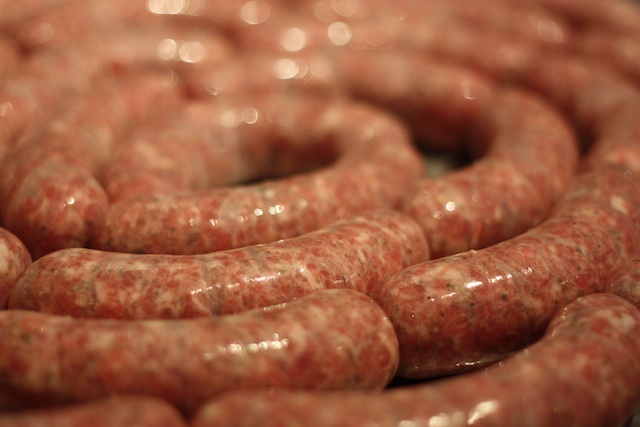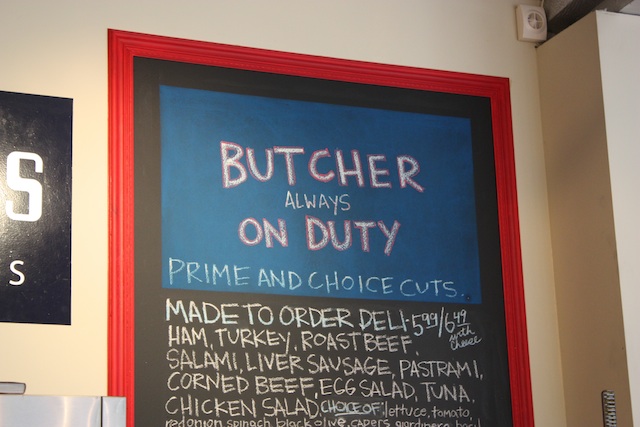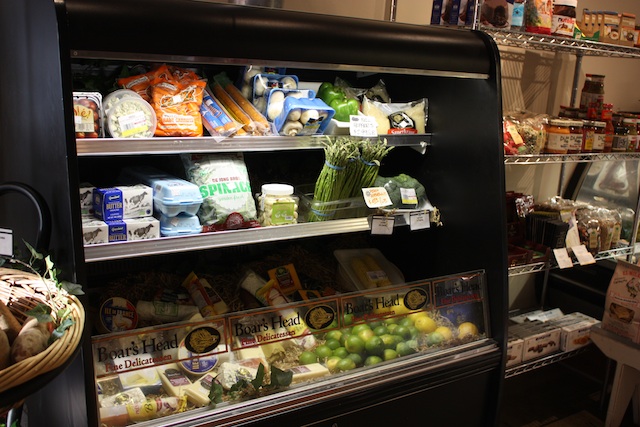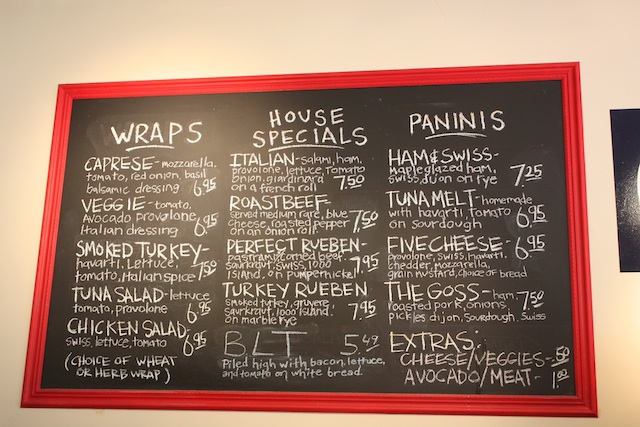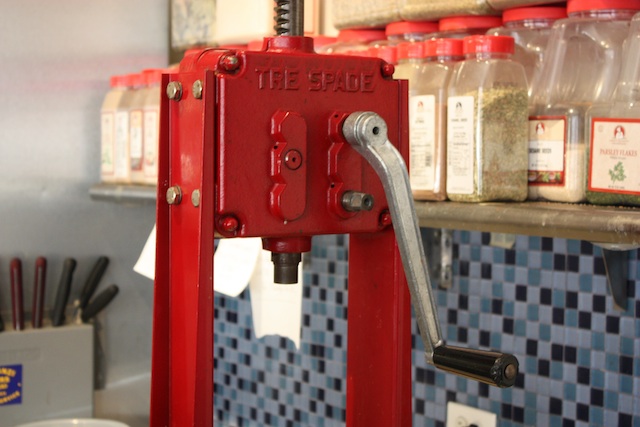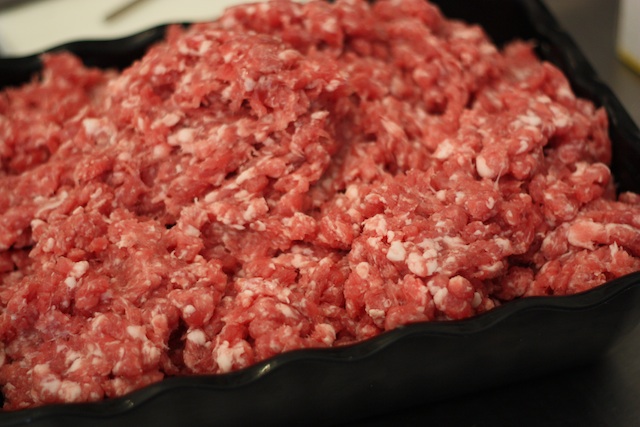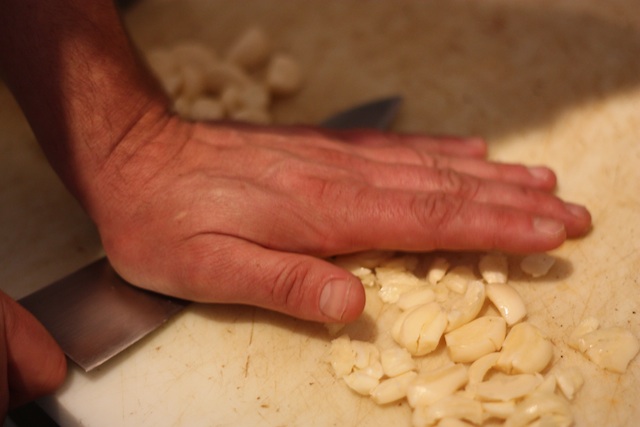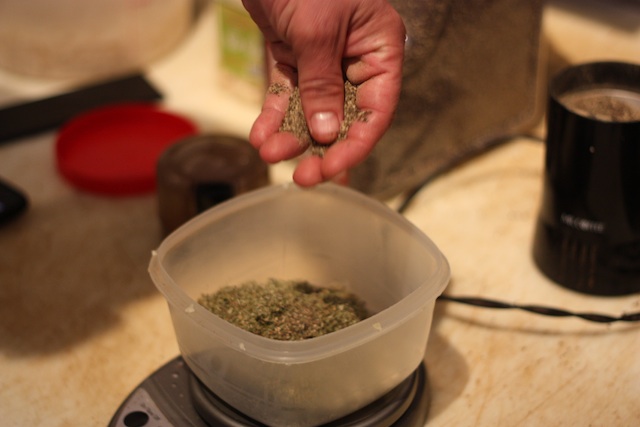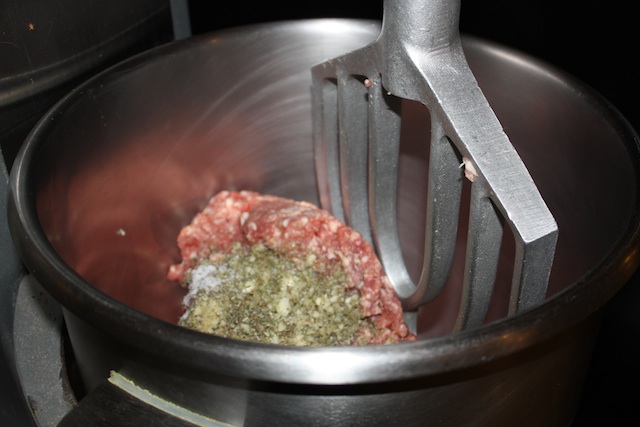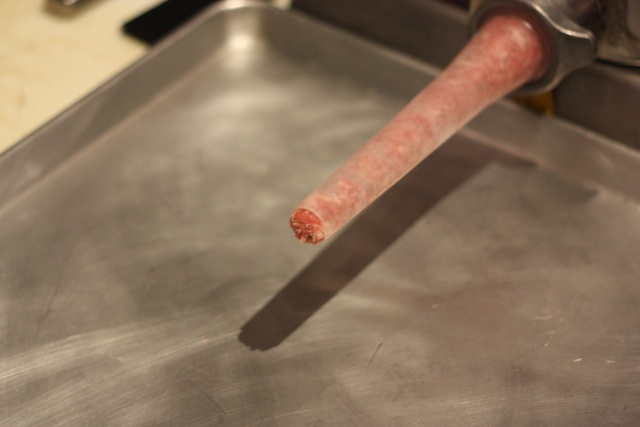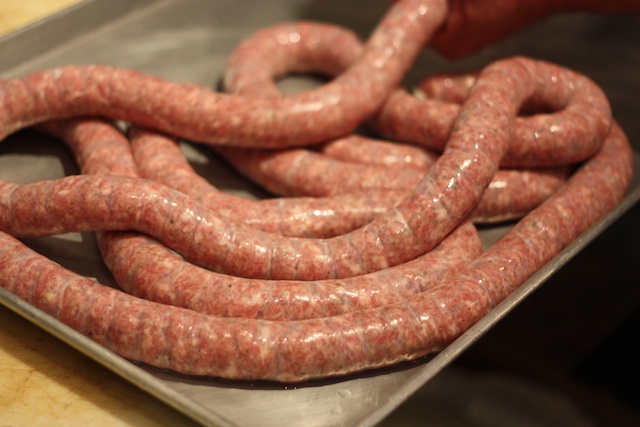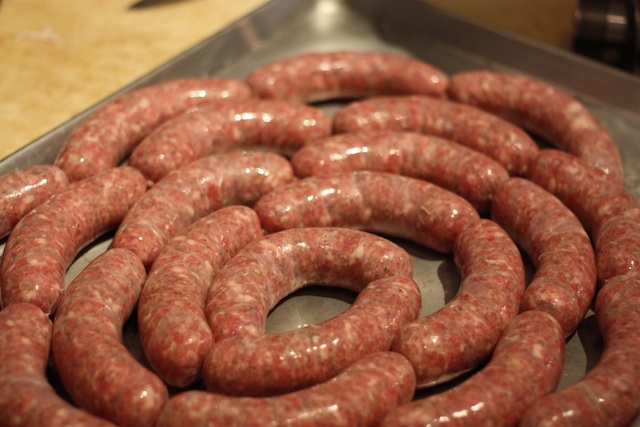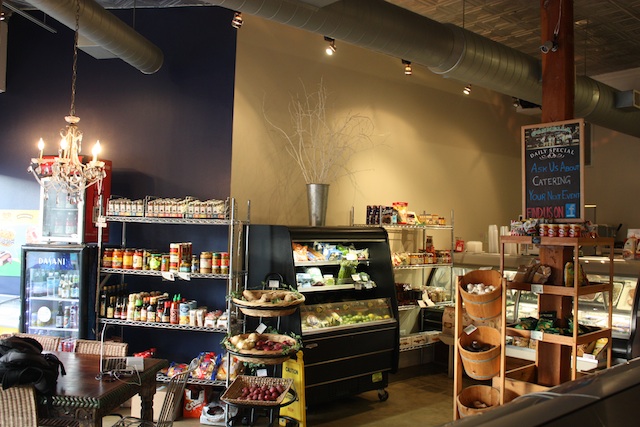Making "The Chicagoist" Polish Sausage At Sterling Goss
By Anthony Todd in Food on Nov 6, 2012 7:00PM
If every neighborhood had a Sterling Goss (or its equivalent), Chicago would be a better-fed city. The west side neighborhood butcher and grocery store isn't as militantly sustainable as Butcher & Larder and it isn't quite as fancy as City Provisions; it doesn't need to be. They carry some grass-fed beef and stock some local packaged products and they make their own sausages and bacon in-house. There's always a real butcher on duty to talk about your roast for dinner. Best of all, they let us mess up their kitchen and practice sausage-making.
Butcher John Hopfinger took us through the process of choosing a sausage. We knew we were going to start with a pork shoulder base (it was already ground and ready for us) but what sort of sausage would we create? After some browsing through the spice rack, and a lot of help from Hopfinger, we settled on a Polish sausage made with garlic, marjoram and black pepper. "It's Chicago, you've got to have a Polish sausage," chuckles Hopfinger.
Hopfinger was in construction for years before he turned to butchering. "I hated my job and would come home and cook all weekend," he remembered. He changed things up, went to culinary school and worked at City Provisions, where he learned sausages and charcuterie. Things at Sterling Goss are a little bit different - herbs are dried and some of the pork is conventionally raised. But for Hopfinger, what's important is that the products are actually made where they are sold. "I know exactly what's in all of this stuff," explains Hopfinger. "We're not going to put in fillers or stretch anything." As we make sausage, customers stop in and Hopfinger (or one of his associates) knows them and remembers what they ordered last week.
The first step is to weigh out all the seasonings. We start with tons of garlic, all chopped by hand. Then we toss in dried marjoram and a handful of black pepper, careful to make sure the ratios are correct. It doesn't seem like that much spice for 10 pounds of pork, but a little goes a long way. Hopfinger reminds me of the old chef's maxim: "You can always add, but once it's in there you can't take it out."
The pork shoulder they use, Hopfinger tells me, grinds to just about the perfect ratio of fat to lean meat: 70/30. Some shops trim everything down and recombine it, but he just grinds it all in. "I love taking the old rough cuts and, with a little time, turning them into something great," he says of sausage. Traditionally, sausage-making is not a gourmet science; it's a way of getting more use out of your meat. Plus, with ingredients like garlic and marjoram, how wrong can you go? The only real danger? Putting in too much fat. "If you go higher than 30% fat, you get a big, greasy mess," explains Hopfinger.
We bring our meat and spices over to the big silver stand mixer and throw it all in. It's important that everything stay cold and that we don't over-mix the meat and spices. If we do, we could heat it all up, melt the fat and end up with trouble. So we mix it just enough to combine. Hopfinger takes a tiny piece of the mixture and drops it onto the grill. After a few minutes, we taste. Not quite right; the garlic isn't bad, but you can't taste the black pepper at all. Back to the scale.
After some adjustment, we finally get a chunk that tastes just right - spicy, garlicky and wonderful. Now it was time to fill the casings. We're using natural casings, which are soaking in a bowl near the big, red sausage press. There's nothing fancy or high-tech about it - just a crank, a weight and a cylinder that we fill with our meat mixture. After Hopfinger threads the casing onto the tube, he begins cranking and the meat squirts right out. He deftly moves the casing, pressing and adjusting the meat as it comes out. "It's all feel," he explains. "When I first started I was so slow, and now it's like riding a bike." You'd never know he was ever anything but fast, since sausage rolls out of the machine faster than I can photograph it. In no time at all, we have a long tube of sausage stretching for several feet.
It still doesn't quite look like sausage - we have to pinch and twist it into links. The, the casings are pierced a few times to get air bubbles out and make sure the casing adheres to the meat. Once all of this is done, the sausage goes back into the cooler to dry and develop a stronger flavor.
While I'm not sure I'll try making it at home on a regular basis (just because of the potential mess), nothing about sausage making is scary or gross. It's just weighing, mixing and pressing; the whole process takes less than an hour. And the results? After a few days in our refrigerator (which now smells intensely like garlic), the results are wonderful.
Sterling Goss is located at 1845. N. Oakley. They're open 7 days a week, and a butcher is always on duty. If you're lucky, there may be some Chicagoist sausage left in the case.
